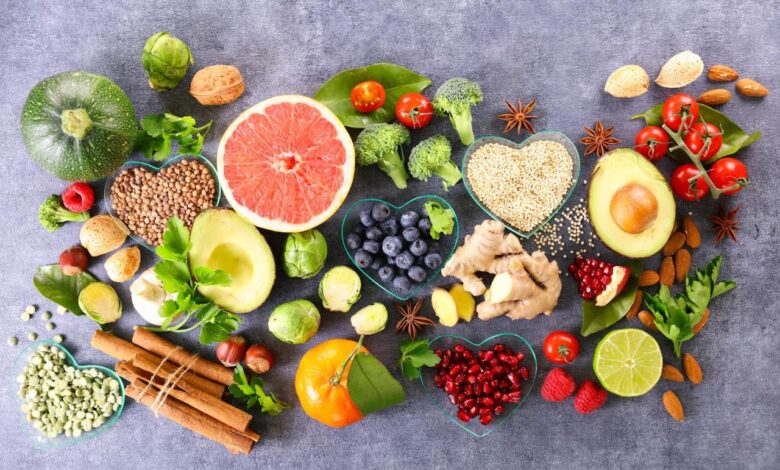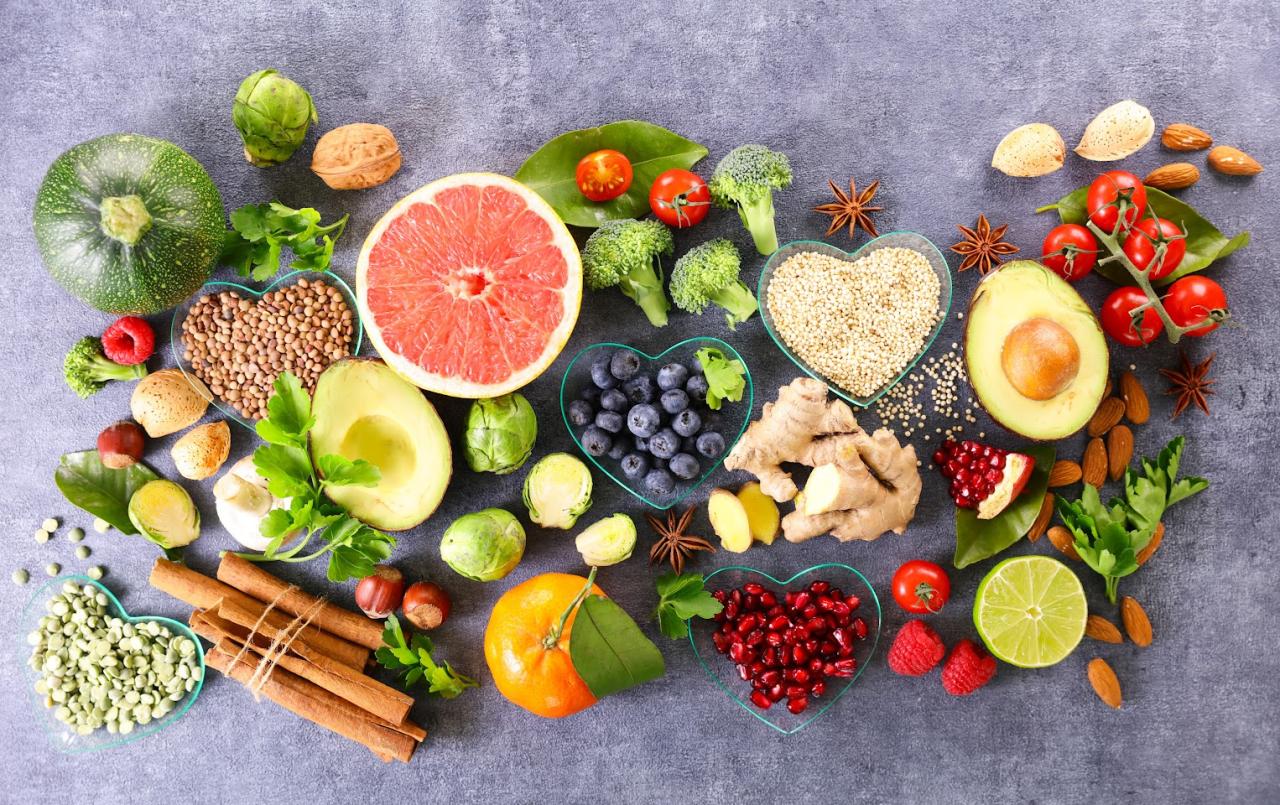
Are You Eating Half Your Recommended Fruits and Veggies?
Are you only eating half your recommended fruits and veggies? It’s a question we should all be asking ourselves. Fruits and vegetables are packed with essential nutrients that play a crucial role in maintaining our health and well-being. They provide us with vitamins, minerals, antioxidants, and fiber, which are vital for everything from boosting our immune system to protecting us from chronic diseases.
But despite their importance, many of us fall short of consuming the recommended daily intake of fruits and vegetables. Time constraints, cost, and a lack of access are just a few of the barriers that can stand in our way.
This blog post will delve into the reasons why we might not be eating enough fruits and veggies, explore the potential health risks associated with insufficient intake, and provide practical strategies for incorporating more of these nutrient-rich foods into our daily lives.
The Importance of Fruits and Vegetables

Fruits and vegetables are essential components of a healthy diet, providing a wide array of nutrients that are crucial for maintaining optimal health and well-being. They are packed with vitamins, minerals, fiber, and antioxidants, which play vital roles in various bodily functions.
Essential Nutrients and Their Roles
Fruits and vegetables are rich sources of essential nutrients, including vitamins, minerals, and fiber. These nutrients contribute significantly to overall health and well-being by supporting various bodily functions.
- Vitamins: Fruits and vegetables are excellent sources of vitamins, such as vitamin C, vitamin A, folate, and vitamin K. These vitamins are essential for immune function, vision, cell growth and repair, and blood clotting. For example, citrus fruits like oranges and grapefruits are rich in vitamin C, which is an antioxidant that helps protect cells from damage and supports immune function.
It’s so easy to fall short of our daily fruit and veggie goals, especially when we’re on the go. But don’t worry, there are plenty of delicious and affordable options out there! Check out this list of 10 RD-approved healthy snacks under $10 for some inspiration.
With a little planning, you can easily reach your daily fruit and veggie goals and feel your best!
- Minerals: They also provide essential minerals, including potassium, magnesium, calcium, and iron. These minerals are crucial for maintaining healthy blood pressure, bone health, muscle function, and energy production. For instance, leafy green vegetables like spinach and kale are excellent sources of potassium, which helps regulate blood pressure and muscle contractions.
- Fiber: Fruits and vegetables are high in dietary fiber, which is essential for digestive health. Fiber helps regulate bowel movements, promotes feelings of fullness, and can lower cholesterol levels. For example, apples, pears, and beans are good sources of fiber.
Health Benefits of Consuming Fruits and Vegetables
Consuming a sufficient amount of fruits and vegetables has been linked to numerous health benefits, including a reduced risk of chronic diseases.
Are you only eating half your recommended fruits and veggies? It’s easy to fall into a rut with your meals, but there are tons of delicious and healthy options out there. For example, if you’re looking for a quick and flavorful dinner, try this teriyaki chicken fried rice recipe – it’s packed with veggies and protein! And remember, even small changes to your diet can make a big difference in your overall health.
So, next time you’re feeling stuck in a food rut, try something new and delicious – your body will thank you for it!
- Reduced Risk of Chronic Diseases: Studies have shown that a diet rich in fruits and vegetables is associated with a lower risk of developing chronic diseases such as heart disease, stroke, type 2 diabetes, and some types of cancer. For example, the Dietary Guidelines for Americans recommend consuming at least 2.5 cups of vegetables and 2 cups of fruits daily for adults.
- Improved Heart Health: Fruits and vegetables are rich in potassium, which helps lower blood pressure. They are also low in saturated fat and cholesterol, which are linked to heart disease. For instance, studies have shown that consuming a diet rich in fruits and vegetables can reduce the risk of developing coronary heart disease.
Are you only eating half your recommended fruits and veggies? It’s easy to fall short, especially when you’re busy. But don’t worry, there are still ways to sneak in extra servings! Try a high protein shrimp burrito bowl , packed with fresh bell peppers, onions, and avocado.
It’s a delicious and satisfying meal that’ll help you reach your daily fruit and veggie goals without even realizing it!
- Weight Management: Fruits and vegetables are naturally low in calories and high in fiber, which can help you feel full and satisfied, promoting weight management. They can also help regulate blood sugar levels, preventing cravings and overeating.
Examples of Fruits and Vegetables and Their Nutritional Profiles, Are you only eating half your recommended fruits and veggies
Different fruits and vegetables offer unique nutritional profiles, providing a wide range of essential nutrients.
- Berries: Berries like strawberries, blueberries, and raspberries are rich in antioxidants, vitamin C, and fiber.
- Citrus Fruits: Oranges, grapefruits, and lemons are excellent sources of vitamin C, which is an antioxidant that supports immune function.
- Leafy Green Vegetables: Spinach, kale, and collard greens are packed with vitamins A, C, and K, as well as minerals like potassium and calcium.
- Cruciferous Vegetables: Broccoli, cauliflower, and Brussels sprouts are rich in vitamin C, fiber, and antioxidants.
- Root Vegetables: Carrots, sweet potatoes, and beets are good sources of vitamin A, fiber, and potassium.
Recommended Daily Intake
It’s crucial to understand how much fruits and vegetables we should be eating each day. The recommended daily intake provides a guideline to ensure we’re getting the necessary nutrients for optimal health.
Recommended Daily Intake for Adults and Children
The recommended daily intake of fruits and vegetables varies based on age, gender, and activity level. The Dietary Guidelines for Americans suggest adults consume at least 2 cups of fruit and 2.5 cups of vegetables daily. Children’s needs vary based on age, but generally, they should consume a smaller portion of fruits and vegetables than adults.
Factors Influencing Individual Needs
Several factors can influence individual needs for fruits and vegetables, including:
- Age:As we age, our bodies may require different amounts of nutrients. Older adults may need more fiber-rich fruits and vegetables to support digestive health.
- Activity Level:Individuals who are more active may need to consume more fruits and vegetables to replenish nutrients lost through exercise.
- Health Conditions:Certain health conditions, such as diabetes or heart disease, may require specific dietary modifications, including increased fruit and vegetable consumption.
- Pregnancy and Breastfeeding:Pregnant and breastfeeding women require increased intake of fruits and vegetables to meet the nutritional needs of both themselves and their developing babies.
“Half Your Plate” Concept
The “half your plate” concept is a simple way to ensure you’re consuming enough fruits and vegetables at each meal. This means filling half your plate with fruits and vegetables, leaving the other half for protein and grains. This method helps promote a balanced diet and encourages a focus on fruits and vegetables.
Example:For lunch, you could have a half-plate of grilled chicken or fish, a quarter-plate of brown rice, and a quarter-plate of a salad with mixed greens, tomatoes, and cucumbers.
Concluding Remarks: Are You Only Eating Half Your Recommended Fruits And Veggies
Ultimately, making a conscious effort to increase our fruit and vegetable intake can have a profound impact on our overall health and well-being. By understanding the importance of these essential nutrients, overcoming common barriers, and adopting practical strategies, we can pave the way for a healthier and more vibrant future.
Remember, every bite of fruit and vegetable counts!






